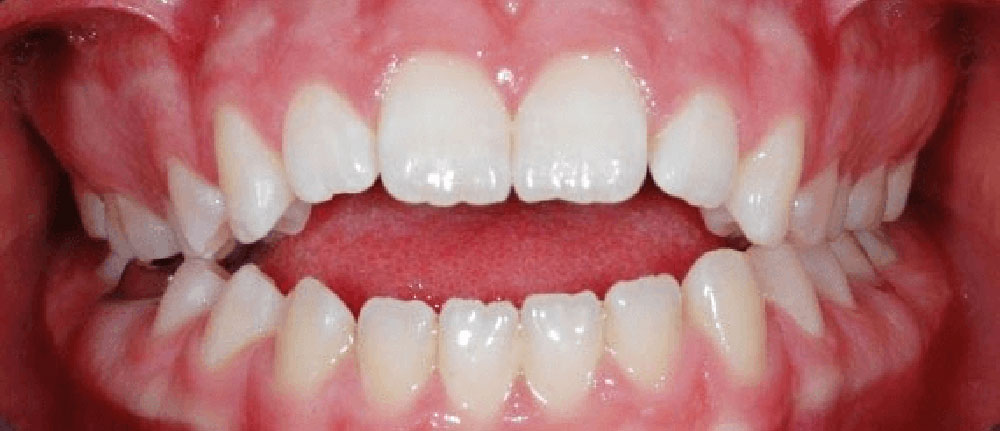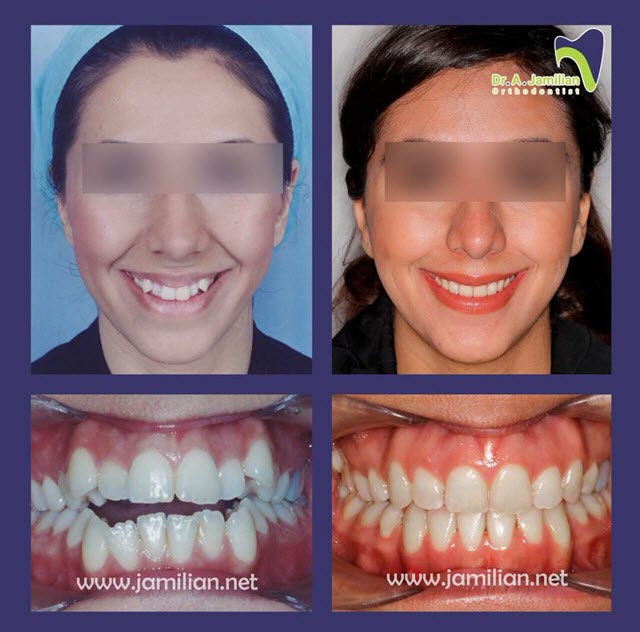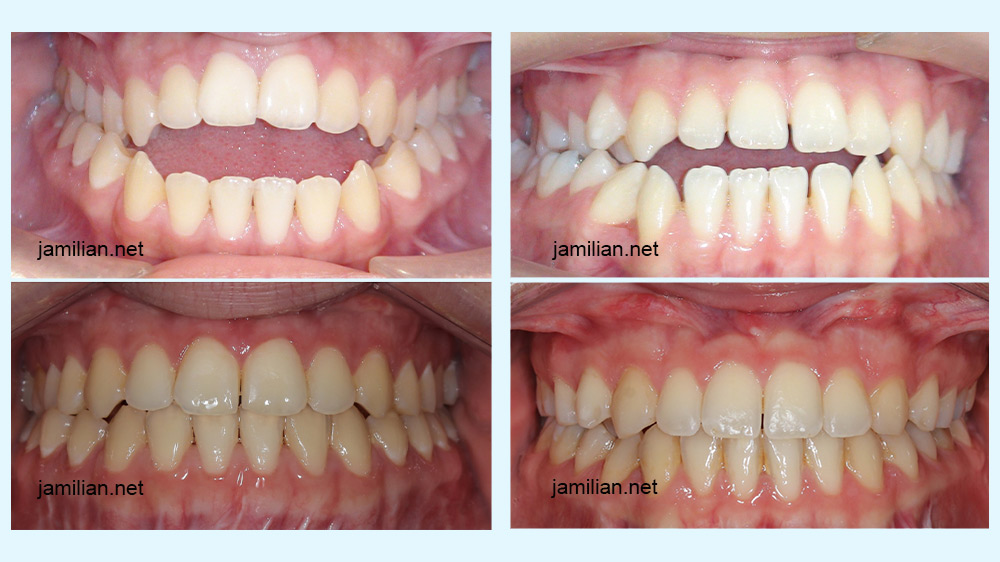Open bite refers to the large gap between the upper and lower anterior teeth so that the upper teeth do not reach the lower teeth. Normally, the maxillary teeth should cover 2 to 3 mm of the mandibular teeth. This malocclusion (or open bite) may arise from bad habits at young ages. Such as finger or pacifier sucking and so on. Despite the probable role of inheritance in the occurrence of open bite, this malformation occurs mainly due to bad sucking habits and physical pressure on that area. Before you know it, it will eventually result in a gap between these two teeth rows.

The effect of this habit on soft and hard tissues is dependent on its duration and intensity, which may cause delay in the growth of some of maxillary and mandibular anterior teeth and thereby open bite. This malformation may be resolved if the sucking habit is quitted before eruption of the permanent teeth (before 5 years old). The simplest treatment method for quitting this habit is direct conversation between the child and the dentist in the absence of parents. As another type of intervention, remembrance is suitable for children who want to quit this habit but need help. One of the simplest methods for this purpose is to apply a waterproof adhesive bandage on the finger. Orthodontic treatment may be required if patients continue their bad oral habits.
Spaced anterior teeth
The gap between the upper and lower anterior teeth not only results in an unpleasant appearance, but also leads to trouble in eating, breaking seeds and speaking, so that patients cannot properly pronounce certain letters such as “s,” “sh,” and “zh”. Other complications of this disorder include posterior teeth abrasion, gum and temporomandibular joint (TMJ) problems and an unpleasant appearance. Early treatment (before puberty) is crucial for resolving open bites, so that immature patients can be easily treated with removable and fixed orthodontic appliances. This malformation can be treated initially with removable appliances with a tongue guard behind the anterior teeth.

In the absence of necessary cooperation for using removable appliances, open bite can be treated with fixed orthodontic appliances with a tongue guard behind the anterior teeth; this treatment is suitable for growing patients. If a patient refers to a dentist after the end of growth, orthodontic treatment may be required along with orthognathic surgery. In this case, the patient should undergo fixed presurgical orthodontics before surgery and postsurgical orthodontics after surgery.
Open bite and vertical face
The importance of vertical facial dimensions was first recognized by Downs. It then underwent further investigations by Nanda and Sassouni, who presented the concepts of deep bite and open bite.
According to the research conducted by these researchers, it can be concluded that taking necessary therapeutic measures to enhance facial height can help to achieve effective open bite treatment.
It was also later found that the ratio of facial height to facial deep should also be considered in orthodontic treatments. Even the face type can prematurely have a direct impact on the growth of permanent teeth. In all these malocclusions an increased vertical face growth is evident.
Causes of an open bite malocclusion
In general, three major factors contribute to the creation of an open bite deformity. Occasionally, jaw bone structural disorders and the presence of a distance between the upper and lower teeth can cause an open bite. In children, an open bite is often caused by various alignments of teeth and is naturally treated over time through the replacement of permanent teeth with the primary ones.
Other causes of open bite malocclusions are the wrong oral habits that a person adopts such as tongue thrust, lip sucking, nail biting while talking or swallowing. Habits, such as sucking your thumb or chewing an external object such as a pencil, create and aggravate an open bite malocclusion. Inappropriate tooth growth is also one of the causes of this problem.

Open bite types
Open bite is divided into two groups in origin: skeletal and dental
- Skeletal open bite: It is related to the jawbone.
- Dental open bite: The jawbones are not affected while the teeth are defective.
Open bite malocclusions are generally classified into three categories:
Anterior teeth open bite
In this type of malocclusion, when the jaw is closed, there are no proper conditions for overlap between the front teeth of the maxilla and the mandible. Although it is difficult to determine the exact cause of this problem in most cases. The following are some of the reasons:
Extended face due to high bone growth
It is created due to incorrect growth of the jaws
Posterior teeth open bite
In this category of open bite malocclusion, there is no contact between the maxillary and mandibular posterior teeth when the mouth is closed. These malocclusions are less common than in the previous category, which makes it difficult to find the exact cause. Here are some of the factors that make up this category of malocclusions:
Problems with the growth of the posterior dentition
Incomplete growth of the posterior dentition
Complications of open bite
The major problem of an open bite is affecting beauty. This problem also dramatically weakens one’s confidence by negatively affecting one’s smile. The inappropriate appearance of this malocclusion has led many patients to rush to treatment for their problems. Open bite also causes speech problems, such as a spelling disorder, in the patient. Patients with this disorder also have difficulties in chewing and swallowing food, and the incidence of tooth decay and abrasion is higher than in other individuals.
Open bite treatment
Treatment of this disorder is easy to do before the tooth develops. The treatment is possible through breaking habits such as sucking your thumb or using an appropriate habit breaker.
In cases where malocclusions have progressed and cannot be resolved by habit breakers, orthodontics is the best possible solution to solve the problem.
Occasionally a person suffers from a skeletal open bite, and so ortho surgery is suggested.
In some cases, the patient also suffers from the dental open bite in addition to the skeletal open bite. In this case, orthodontics is also required before and after surgery.






